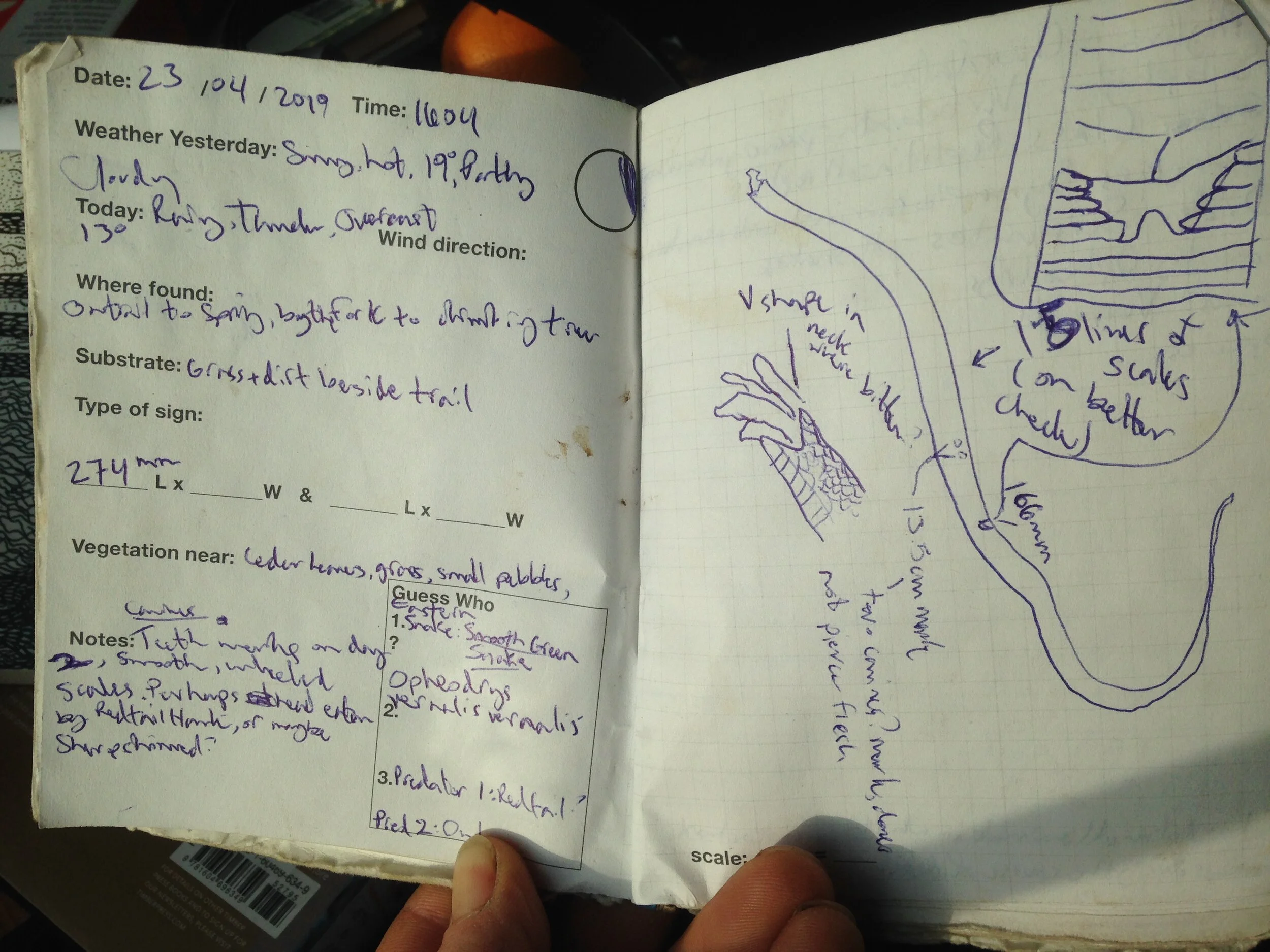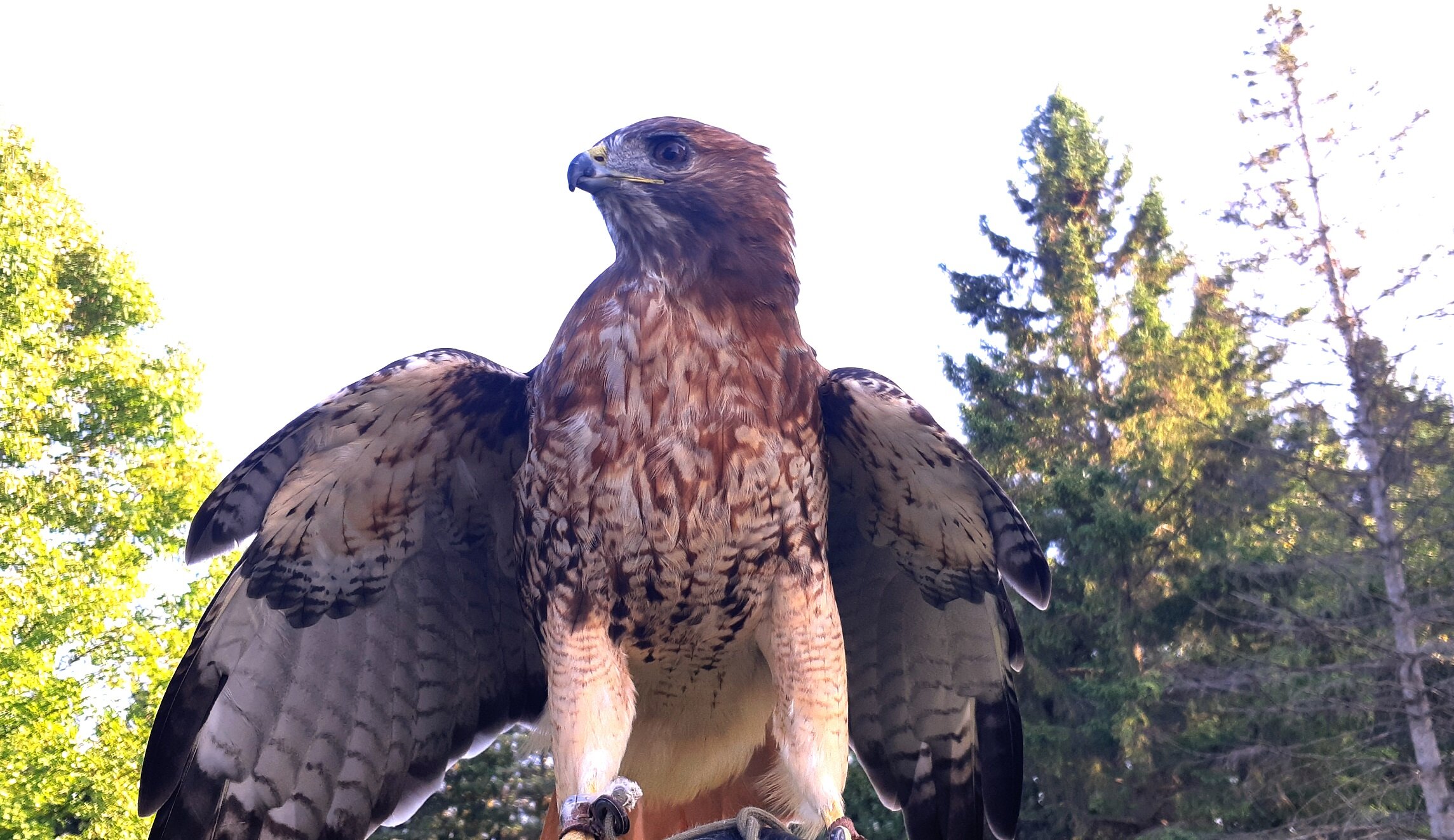Red Tail Hawks (Buteo jamaicensis)
Grainy photo of juvenile Red-Tailed Hawk (Buteo jamaicensis) perched on a powerline at work. 11.11.2020
I love Red-Tailed Hawks (RTHA). They are commonly seen, in the midst of peak migration (mid November) and are pretty accessible birds to learn about. They hang out near people usually at the sides of roads perched on telephone poles and powerlines, or sometimes just up a Pine tree overlooking a field. This is one of the ways Red-Tails hunt, by perching, waiting, watching for movement in the tall grasses, at the tree roots, and when they see some creature moving about in the underbrush, the Hawk dives in for the kill. Not always do they make the kill, but they certainly try. When the above photo was taken, they were successful a short time afterwards and caught a Mouse at the base of some Buckthorns (Rhamnus cathartica). Red-Tails also hunt by scanning the ground while soaring above, or seemingly hovering in place, riding the winds with their wings outstretched.
RTHA usually hunt for small mammals such as Mice, Voles, Chipmunks, Squirrels, Rabbits, but also take Amphibians, other Birds, large insects and Reptiles. I once found a Smooth Green Snake (Opheodrys vernalis) with their head clipped off with V-shaped incision on the remains below the head, likely predated by a RTHA.
Tracking journal entry of Smooth Green Snake (Orpheodrys vernalis) with missing head and V-shape incision where bitten off. Entry written 23.04.2019
I have also seen RTHA eating carrion at the sides of roads, and once mowing on a dead Coyote’s (Canis latrans x Canis lupus x ??) liver out in a farmer’s field at the edge of the woods, alongside a Turkey Vulture (Cathartes aura)!
Red-Tailed Hawk, a little more mature from the top photo, in the care of Wild Ontario!
There are many morphs and subspecies of RTHA depending where you are on the continent. I am in the Eastern half of the continent so I will share some simple identification notes for Buteo jamaicensis ssp. borealis, the common RTHA in my area.
Adults: Short rounded red tail with dark subterminal (near the tip) band and white terminal band (end or tip of the tail), brown head, darker eyes, white throat and breast with belly band.
Juveniles: Multiple bands of alternating light and dark brown with pale terminal band at the tip, lighter yellowish eyes, belly band as well.
Both: Adults and juveniles have a dark streaked belly band reminiscent of a cummerbund. They also have dark patches of brown feathers that line the leading edge of the wings visible from below while birds are in flight. These are called “patagial marks”. Another under wing sign are dark comma shaped markings at the “wrists” of the wings, and dark edges at the wing tips, while generally pale yellowish to white with some regular spotting underneath.
Sizes: Females 51 - 64 cm long ; 1.2 - 1.5 m wingspan. Males : 46 - 58 cm long ; 1.2 - 1.5 wingspan.
Habitat: Open areas with trees and meadow lands, fields and roadsides, along hedgerows and in mixed open forests. They’ll usually nest in deciduous woodlands next to open areas, but sometimes in coniferous trees as well.
Nests and young: In Ontario nest building can begin by around late February - early March, with the eggs laid in mid March and will be incubated until mid June - mid July, though nestlings can hatch as early as mid April, and all the nestlings will have fledged by early August.
They nest in open to semi open areas, within mixed coniferous and deciduous forests, near grass and shrublands, as well as agricultural landscapes. In Southern Ontario, you are likely to find the nest at the forest edge bordering on farmland and open pasture fields where they can hunt close to the nest.
Females and males will build a new nest or refurbish older nests occasionally previously occupied by Great Horned Owls (Bubo virginianus). The nest will be used for one or more years, and then vacated for one or more years and then used again. They will build the nest using sticks averaging 1 - 2 cm in diameter. The nest is lined with strips of bark, deciduous and conifer sprigs, poplar catkins, and other finer materials. The nests are often located pretty high up in the crowns of taller trees, about 12 - 18 m high. The nest diameter is about 70 - 75 cm.
Nest building can easily be interrupted by human presence. Red Tails don’t like folks hanging around and may abandon the nest if bothered. Observe from a distance, keep moving through the area.
They seem to be very territorial and won’t allow another breeding pair or individual into their home range. I have also noticed that Red-Tails will hang out in similar areas around the same time every day. This is how I got to know a pair of Hawks I collectively call “Screamer” a couple winters ago. I would see them often along the trail I take to work and they would always scream out in the archetypical call and I would be stoked for the rest of the day.
I am wondering now if the RTHA pictured at the top of this page is the offspring of Screamer, returned to the valley of their birth to take over? Is this a thing for RTHAs? I would love to interview a RTHA researcher to find out more.
RTHA at a distance. I find it useful to practice with these distant id’s as that is how we often encounter the animals.




